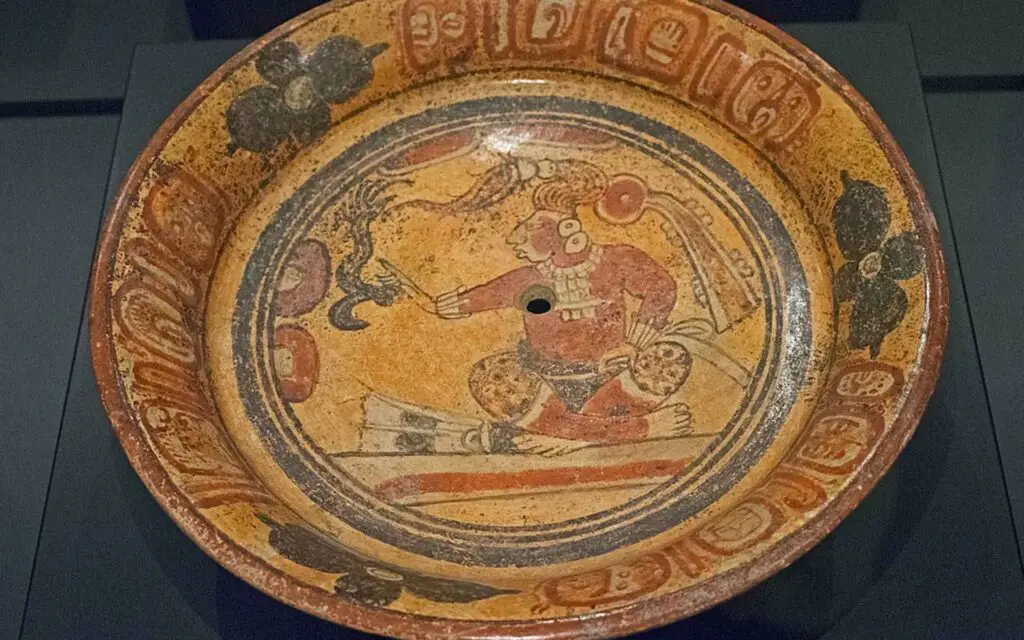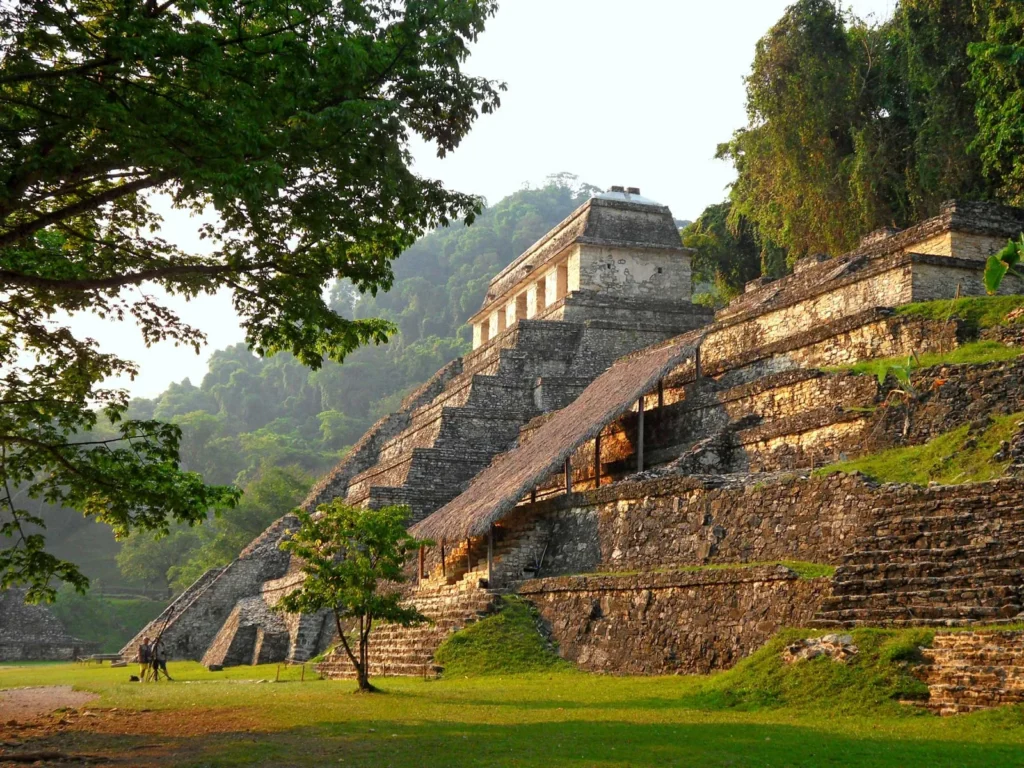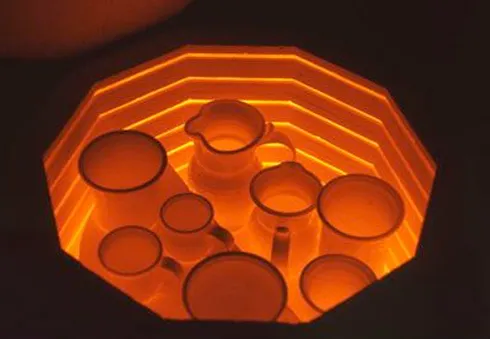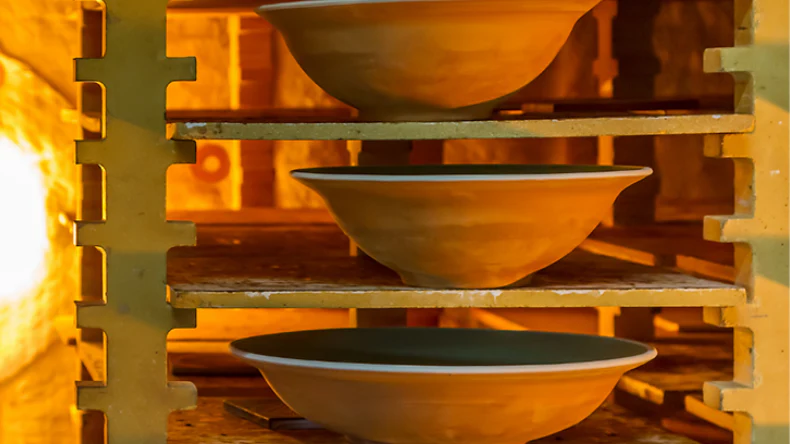Every year, millions of tourists flock to El Salvador and Mexico to witness the amazing stone pyramids of Chichen Itza and marvel at the feast of the ancient world. Something as amazing as the pyramids raises the question of what else the Mayan pottery artisans were capable of.
A culture cannot thrive for three millennia and grow wealthy and strong without producing exquisite ceramics.
A Brief History Of Mayan Pottery
The chronicles of Mayan pottery. The pottery of the Maya Early Classic dates from AD 250 to 550. The Maya soon began using polychrome slip paint, meaning they used many different colours to decorate the pots. This decoration method became almost homogeneous for Mayan potters, thus signalling the beginning of the Classic Period.
The importance of ceramic vessels to the Mayans’ pottery and the techniques used in their ancient pottery making The Mayans achieved remarkable achievements in mathematics, astronomy, organized athletics, stone architecture, and art throughout those three millennia.
The focus of this article will be Mayan art. We have much to look at since pottery endures long after a civilization is lost.
Earliest Recorded Mayan Ceramics
Archaeologists date the first Mayan pots to 900 B.C. or approximately 3,000 years ago. These were practical pots in the beginning. Consider using bowls, vases, and plates to carry objects, serve food during mealtimes, and store food and drinks.

The locals used to carry grains and liquids by hollowing on Palenque: Maya’s Art Capitalist vegetable gourds before the Maya civilization emerged. It follows that early pottery jars were shaped like gourds.
One of the most interesting differences between pottery and ceramics of studying is uncovering the rich history behind these ancient art forms. When it comes to the earliest recorded Maya ceramics,
Popular Period For Mayan Pottery
The Early and Late Classic period is when archaeologists believe the Mayans made significant advancements. The pottery from this historical period greatly surpasses their initial ceramics. During these two eras, polychrome painting which has come to be associated with Mayan ceramics for many was developed and refined.
To accurately capture the scenery and hieroglyphs in this style, an artist with much training and expertise is needed.
Palenque: Maya’s Art Capital
Since sophisticated artworks have been found in the city’s remains, many historians have dubbed Palenque the art capital of the Mayan kingdom. Palenque doesn’t seem to be a particularly wealthy or large metropolis, in contrast to other strong empires. the city’s buildings featured high-relief carvings and stucco artwork, which was refined throughout.

How Did The Ancient Mayans Make Pottery?
The majority of Mayan pottery designs were created without the use of a wheel. Rather, the Mayans’ pottery used hand-building methods including slab building, coiling pots, and pinch pots to create their ceramics by hand.
In contrast to other civilizations we’ve studied, the Mayan people did not advance from manual construction methods to the use of a potter’s wheel. The absence of a pottery wheel likely contributed to the lack of large-scale pottery production throughout the Mayan era.
Pottery Techniques Of Maya Artists
A wooden disk known as a “kabbala,” which resembled a potter’s wheel, was eventually introduced. The potter would spin the gadget as it rested on a board between his feet. a contemporary potter would not mistake the object for a studio-style wheel. The absence of pottery wheels was not the only thing in Mayan culture.
A wooden disk known as a “kabala,” which resembled a potter’s wheel, was eventually introduced. The potter would spin the gadget as it rested on a board between his feet. However, a contemporary potter would not mistake the object for a studio-style wheel.
The majority points out that since there were no animals fit for wheeled vehicles, the Maya people did not require them, unlike many other cultures.
This humble type of clay gave rise to works of art that tell a story of ancient craftsmanship and civilization. When one imagines it now, the evocative quality of each cup or figurine made from earthly materials by skilled hands who spoke an ancient language is remarkable.
One of the most fascinating pottery techniques practised by the ancient Maya artists is known as slip and score. This method involves applying a wet clay (known as slip) onto a surface and then scoring it to create intricate designs and patterns
Kilns For Firing
That is precisely how the Mayans accomplished it, employing largely ground-level pit kilns firing to do it efficiently. Excellent knowledge of earth science and artistic ability are prerequisites for this kind of ceramic production. These were not just any old excavations, but rather well-planned combustion chambers meant to provide the best possible fire conditions for their exquisite ceramics.
The ceramic pieces that were going to be fired would be arranged on blocks in these pits to keep them away from the hot embers. This arrangement covered a treasure trove of fuel: dry organic materials like wood or animal dung, which, when lit ablaze, would steadily raise the temperature inside the pit.

Aerodynamics and insulation work together to produce a very high temperature, which is ideal for transforming raw clay into long-lasting ceramic objects. Picture yourself in the heart of ancient Mayan civilization, surrounded by innovative techniques and traditions that baffle our modern minds yet continue to earn our profound admiration.
One such tradition is their way of creating superlative ceramics made possible by intricately designed kilns or firing pits – primal versions of our modern-day industrial ovens.
At the centre of these kiln structures lies a stroke hole, a brilliantly thought-out feature that allows the kiln attendants to consistently feed fuel to maintain high heat levels. And oh! The fuels weren’t just any random materials but incredibly efficient indigenous resources like wood from Copaifera and Manilkara trees or dried palm fronds.

A burning testament to the fact that their sustainability efforts were way ahead of what we could have ever fathomed in those days! So if you ever think ‘going green’ is a contemporary concept, remember how these ancient civilizations, including Mayan pottery, had it all figured out centuries ago using renewable fuel resources in their daily life processes such as kilning.
The distinctiveness of these organic fuels was shown during the procedure by carefully planned burns and radiant heat patterns.
It’s amazing to think of how well they utilized these readily available natural resources, not only for energy requirements but also as sophisticated instruments impacting artistic outputs like ceramics that speak so beautifully even now about the Mayan pottery era.
What Kind Of Pottery Did The Maya People Make?
The Mayan civilization, known for its artistry and innovation, left us with astounding revelations about our past. Among their varied manifestations of creativity stood out their pottery, playing vital roles not just as practical everyday items but also serving as metaphors of life and cultural standards.
Score and slip enabled intricate decorative details on Mayan ceramics. Artists could meticulously carve patterns into dried clay before adhering them onto vessels using finely prepared slips with different colours.
Their masterful hands created pots, plates, and jugs – essentially covering elements for an array of mundane needs and ceremonial rituals. The surfaces were adorned with complex geometric patterns or intricate depictions of their gods and myths – a unique reflection of the rich socio-political scenarios they lived in.
These earthenware pieces were more than mere commodities; they represented expressions of self-identity and markers of social standing within Mayan society. Mayan ceramics became tangible narratives engaging in storytelling through intricate depictions etched onto them.
The pottery not only recorded history or immortalized heroes but also unfolded common men’s lives in esoteric ways. They fostered community bonds and aided spiritual communion by serving sacred food during ceremonial events transcending their mundane role as mere utensils bearing vital clues about ancient civilization’s pulse.
Mayan ceramic artistry is indeed a testament to its dynamic culture rather than just utilitarian craftwork. Spiral wedging had symbolic implications for the Maya people. The spirals found on their pottery represented cyclical concepts such as time
Ritual Uses Of Potter
In the holy and sacred ruins of the Mayans, archaeologists have found broken ceramics. The Mayans were devout animists who thought that both living things and inanimate objects had spirits. A small number of Mayans made pilgrimages to sacred sites. After that, the pilgrims would smash ceramics in the hallowed space.
The essence of the composition was released as a sacrifice once the containers were broken. Everyday household objects, came Mystery Vessels, artefacts that reveal a great deal about the ceremonial uses of pottery by the Maya. The frequent practice of human sacrifice was one of the more horrifying features of the Mayan civilization.
The offerings served as a counterbalance to the prayers for good crops and rain.
A prisoner of war would be slain and their blood ceremoniously spilled as part of the rite. Blood was frequently collected in ornamental jars so that a Maya priest could offer it as a sacrifice to the right gods.
Amid the ruins of the past, stand artistic marvels that are housed within earthen structures rather than on canvases or texts: Mayan pottery, brimming with elaborate designs that reflect spiritual devotion and capture moments from everyday life against a background painted by rich mythology and cosmology a testimony that every aspect of life in the long-gone society is intricately entwined with art, with each work patiently whispering stories that have been waiting for decades to be share.
Using Pottery To Tell Stories
In addition to being used for religious purposes, ceramics were frequently used to transmit and save stories for upcoming generations. Glyphs would describe everything, including melodies and sacred texts. Numerous pots vividly depicted images of significant political occasions or more routine activities of the ruling class.
Popular Designs And Styles Polychrome Pottery
Crackling through time are Popular Designs and styles presenting tales from ancient mythology to high-ranking Mayan nobility in diverse postures of power and adornment.
These intricate designs intricately interweave within a broader canvas of natural motifs replicating animals and plants from their immediate environment. Polychrome Pottery is not just ceramics moulded beautifully to form rather, it’s a storytelling cautionary tale stripped from pages of deep history narrated carefully within layers upon layers of vibrant colours- decanting lost epochs into an eternal visual odyssey.
This pottery form gives artists a vibrant palette to paint their fanciful narratives. Just as a writer pens down his/her thoughts using words, potters sketch their imaginations through colours and forms, exploring endless avenues for artistic expression.
The scene painted on the ceramic surface isn’t just eye-catching; it offers profound insights into popular designs and styles dictated by geographical regions and cultural contexts. The amalgamation creates a stunning aesthetic that renders each polychrome pottery piece unique despite reflecting common themes found in traditional lore or everyday life scenarios.
Figurines And Effigies
Imagine unearthing a small, intricately carved ceramic figurine, its intricate details braving the test of time. These figurines and effigies act as silent narrators whispering tales about life in the ancient Yucatan Peninsula to our much tech-savvy era.
Across numerous archaeological digs on the Yucatan Peninsula, such discoveries are far from an anomaly; they help construct a jigsaw puzzle of forgotten cultures and civilizations that once danced under the same sun. Delving into the crux of Mayan culture, one cannot overlook the dynamic duo that defined much of their narrative: the bewitching figurines and effigies.
These artefacts form an enigmatic window into their world, allowing today’s societies a peep into age-old rituals, beliefs and traditions artfully preserved in clay or stones.
A little-known fact about the Maya civilization showcases how they used figurines not merely as objects dart but as visual representations of natural phenomena, deities and even common folk. The richness of Mayan effigies is a testament to their sheer diversity.
Adorned with intricate details and vividly characterized expressions, these creations narrate fascinating tales beyond pottery – from Gods holding court to warriors in battle regalia to simple household scenes subtly capturing priceless sociological nuances.
Be it through an exquisitely carved seashell morphed into a divine effigy or a terra-cotta figurine symbolizing human synergy with nature; each routinely expands our understanding and appreciation of this remarkable culture without needing words.
Resilient against nature’s ploys for centuries, these effigies shed light on societal norms, rituals, and beliefs of those who moulded them with love and reverence. Each dig reveals more detailed figures than before- indicating the evolution of artistry skills over time. They suggest an inherent cultural emphasis on craftsmanship intended to encapsulate individual identities or collective experiences.
Each figure is truly unique in design: some pleasing deities while others memorializing valiant warriors – opening up new perspectives in studying ancient Mayan civilization’s nuance. The shape of this pottery whistle is a bird with a pair of legs and a tail. It has two internal and external sound rooms giving it a double whistling.
A mouthpiece in the tail, the lower chamber, which is housed in the bird’s body, is audible. Two pitches can be produced with the single fingers opening in this chamber which is on the outside of the bird’s belly. The bird’s beak includes another, lesser chamber that is opened by an opening that protrudes into the ears.
Conclusion
The identity of the old Mayan people is still being solved. As more is learned about the people and their culture, more is learned about the significance of Mayan pottery in daily life. I hope you enjoyed reading about some history and the types of ceramics that were produced in ancient Maya.
FAQS
How Old is Mayan Pottery?
The earliest Mayan pottery found at Colha, in Belize, is about 3,000 years old. Recently, however, 4,500-year-old stone agricultural implements were unearthed at Colha.
What Type of Clay Did the Mayans Use?
The ancient Maya civilization used a rare type of clay called “palygorskite” to produce Maya blue.
